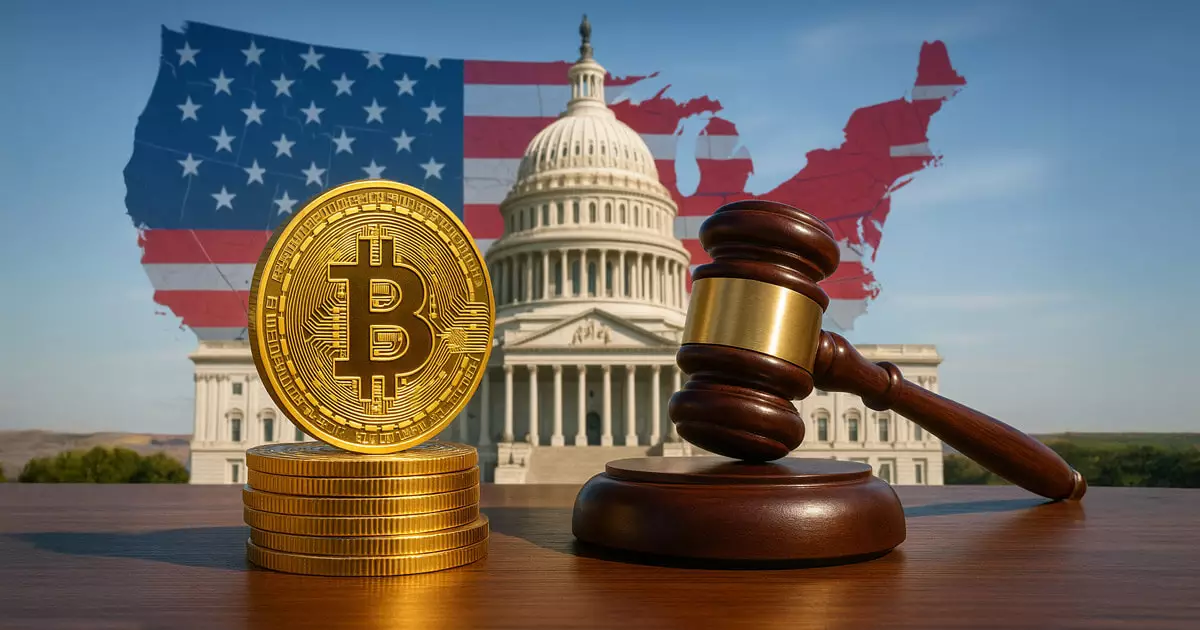In an era marked by rapid technological advancement and an ever-evolving financial landscape, the Digital Asset Market Clarity Act introduced by House Financial Services Committee Chairman French Hill on May 29 represents a significant stride towards establishing order within the often tumultuous world of cryptocurrency. The carefully crafted 249-page proposal outlines a regulatory framework designed not merely to corral these digital titans into submission but rather to foster a conducive environment for innovation and growth. Hill aptly frames this legislation as an essential step in securing the United States’ leadership in the burgeoning field of digital assets.
This initiative is timely and necessary; however, it highlights the intense struggle lawmakers face in defining what constitutes digital commodities versus traditional securities. Amidst this ongoing regulatory tug-of-war, the bill delineates concepts such as “digital commodity” and “investment-contract asset,” clarifying their meanings under existing law. As these definitions become clearer, they hold the potential to alleviate many uncertainties that have plagued businesses operating in this space, cultivating a nurturing environment for innovation. But, as with any government intervention, comes the challenge of ensuring these regulations do not stifle the very progress they aim to protect.
Balancing Innovation with Security
One of the most compelling aspects of the bill is its approach to primary token offerings, which introduces a four-year safe harbor provision for networks reaching “mature” status. This innovative provision allows issuers to raise capital without immediate regulatory scrutiny, provided their total fundraising does not exceed $75 million over any 12-month period. This strikes a delicate balance between enabling entrepreneurs to access the financial resources necessary for growth while also ensuring some degree of oversight to prevent potential fraud.
The proposed legislation acknowledges the importance of self-governance and recognizes the evolving nature of the cryptocurrency marketplace. The transitional phase marks an aligned interest between regulators and innovators, as these parties work together towards defining a framework that both protects consumers and nurtures groundbreaking technologies. Nevertheless, the industry must remain vigilant to ensure that future iterations of such legislation do not become overly restrictive, potentially choking off the lifeblood of innovation.
The Role of Regulatory Bodies
By consolidating various oversight responsibilities under the Commodity Futures Trading Commission (CFTC), the Digital Asset Market Clarity Act aims to streamline regulatory processes. Engaging the CFTC allows for a more focused approach to digital activities, which aligns with the unique characteristics of cryptocurrencies and digital commodities. Additionally, the plan proposes that native crypto venues must undergo provisional CFTC registration, aligning their operations with established regulatory standards.
While the CFTC’s involvement represents an investment in better regulation, it is crucial to remain cautious about overregulating this sector. The primary objective should be to establish a framework that is flexible enough to accommodate growth without compromising consumer safety. This is particularly important as the cryptocurrency landscape continues to evolve at a pace that regulators may struggle to keep up with, making agility a key feature of successful regulation in this space.
A Bipartisan Effort Towards Consumer Protection
Aiding the momentum of this legislative push is a rare display of bipartisanship. The backing of both Democratic and Republican sponsors underscores a shared goal: to protect consumers while enhancing the U.S. standing in a global digital economy. Lawmakers are framing the bill as a measure for consumer protection, with tangible mentions of closing regulatory gaps and defining rules of engagement for businesses.
While such bipartisan support is laudable, it ultimately begs the question: can a bill of this magnitude truly encompass the diverse needs of constituents across the political spectrum? The answer lies in the bill’s execution and the willingness of lawmakers to adapt and evolve the legislation in tandem with industry feedback. In the fast-paced world of cryptocurrencies, those adaptable enough to innovate will emerge as the real winners—consumers and businesses alike must be at the forefront of that revolution.
As the committees prepare for joint markups and potential floor votes, the stakes are higher than ever. The path forward will not just dictate the fate of millions of dollars in digital currencies but also shape the landscape for future technologies. The proactive steps outlined in the Digital Asset Market Clarity Act could redefine America’s position at the forefront of the digital finance revolution.


Leave a Reply